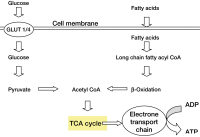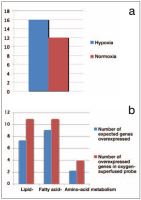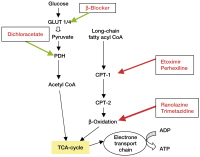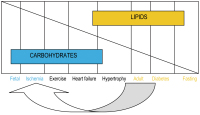Real-time PCR
Figure 1: Results from real-time PCR measurements of 72 experiments (n = 12 in each group; o2ko = well-oxygenated, no ischemia,
no drug; n2ko = experimental ischemia, no drug; o2at = well-oxygenated,
no ischemia, atenolol present; n2at = experimental ischemia,
atenolol present; o2neb = well-oxygenated, nebivolol present;
n2neb = experimental ischemia, nebivolol present). It can be seen
that during experimental ischemia, there is an up-regulation of
GLUT1 expression, however, not statistically significant. This confirms
earlier data by our group. While there is no significant regulation
with and without the influence of beta blockers during myocardial
ischemia either, there is, however, a significant difference between
the expression of GLUT1 in well-oxygenized preparations with
(0.87 ± 0.02) and without nebivolol (0.62 ± 0.02; ± SEM; p ≤ 0.05).
Similarly, atenolol led to an increase of GLUT1 expression in welloxygenated
preparations compared to controls: 1.18 ± 0.08 and
0.62 ± 0.02, respectively (+ SEM; p < 0.05)
Keywords:
chart,
Diagramm






